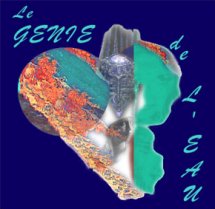Attempts have been made over the last two decades to provide improved water sources to rural communities in Africa. Various stumbling blocks have prevented the rural populations from fully benefiting from these improvements, in part because what was seen as a technical problem is now more linked to a human problem.
Initially, the problem was thought to be purely technical/technological. The main technology adopted in rural areas has been the handpump installed on a borehole. Thus, the problems were thought to be associated with the drilling the boreholes, with handpump installation, with the quality of the handpumps. It was thought that the communities either would spontaneously organise themselves to collect funds and maintain the handpumps or the government would take on this task.
Gradually, it was found that the technical aspects were relatively simple to deal with, i.e. existing technology could drill the boreholes without major problems, many areas were found to have water at a shallow enough depth to allow extraction by the handpumps (less than 60m) which could be installed without significant difficulty .
However, despite this after more than two decades of rural water supply projects, it was found that most of the water points were not being maintained. The main reasons for this were apparently :
- Lack of a feeling of ownership by the beneficiary communities (i.e. water points were provided by project implementers with little participation from the beneficiary communities)
- Little consideration was given to the fact that women were the members of the community mainly responsible for providing water to the family.
- Lack of funds for the maintenance of handpumps, either at the community level or at the central government level.
- Inefficient centralised system of mechanics for the maintenance of the handpumps
- Handpump design that required relatively large machinery for some of the maintenance tasks.
- Large number of different pump models in the same geographical area rendering maintenance/repair even more difficult
- Lack of a valid handpump spare parts distribution network, again made more difficult my the variety of handpumps in a particular area.
- No link, from the beneficiaries point of view, between potable water and better health. Increased convenience was the most likely reason for keeping a pump functioning.
Thus, since the early nineties various approaches are being adopted to try to overcome these difficulties.
First, attempts are being made to have the beneficiary community involved in the decision making process from the beginning. These attempts include:
- Helping in the creation of village water committees, who are involved in the decision making process regarding the choice of improved water point system, siting of the improved water point;
- Asking the villagers to contribute financially (partially "buying" the improved water point) before any physical work is carried out;
- The village water committees receive training in the various tasks for which they will responsible (running community meetings, collecting and managing maintenance funds, simple maintenance tasks, etc.);
- Signing "contracts" between the villagers and the project implementers, sometimes with local government officials as well, clearly defining the mutual responsibilities.
- "Insisting" that women have significant roles in the village water committee, including sometimes the role of pump caretaker which includes "technical" maintenance tasks.
The initial financial contribution is used to assist in understanding the need for funds for keeping a water point functioning as well as for the water committees to be involved from the beginning in fund management and to have funds immediately available to carry out maintenance tasks.
Local mechanics (e.g. bicycle repairmen) are trained in maintenance and repair of handpumps for which they are paid by the villagers, whilst many of the minor maintenance tasks can be carried by trained village caretakers,. Handpumps technology has been developed to be VLOM (Village Level Operation and Maintenance) with very few maintenance and repair tasks needing to be carried out by centralised, specialised machinery and technicians.
Efforts are being made to standardise handpumps within specific geographic areas to facilitate not only training in pump repair but to try to make spare parts distribution an economically viable exercise for local commercial enterprises. Contracts for the supply of handpumps also include provisions for the identification of local spare parts distributors.
The link between potable water and better health is harder to demonstrate The provision of clean water does not necessarily mean improved health as so many other factors are involved. In fact, it has been found that modifying the hygienic behaviour, by hand washing at specific times, of the main food preparer has more effect on the health of the family than anything else.
Gradually, it can be seen, the users of the rural water supply systems are becoming central to the provision of these systems.
Biography of Alan Malina










